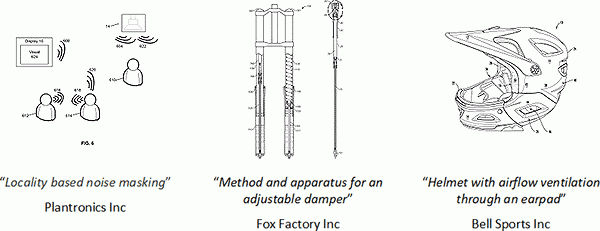Companies
Pat Reilly: The Supremes Consider US Trademark Registration of “Generic” Domain Names

By Pat Reilly, Intellectual Property/Patent Attorney, and Clio Mykland, Technical Writer
Special to Santa Cruz Tech Beat
October 27, 2020 – Santa Cruz, CA
(Photo above: Patrick Reilly is an Intellectual Property/Patent Attorney practicing in Santa Cruz. Contributed)
Strengthening the Value of Explicit Domain Names
Trademark law is generally quite sensible; the markings of goods and services is meant to assure a purchaser of the true source of the associated goods or services. When consumers make purchases while misled by confusingly similar marks or intentional counterfeiting of a trademark, the deceived purchaser can be damaged and confidence in the marketplace can be eroded.
The United States Patent and Trademark Office (USPTO) has thus generally avoided the trademark registration of generic phrasing like “pilsner beer” or merely descriptive wording like “fast skates.” Accordingly, the USPTO has long maintained a policy that the generic (!) top-level domain components, e.g., .com, .biz, and .net, of a domain name would be irrelevant to a Trademark Examining Attorney in determining if a domain name was merely descriptive or essentially generic. The recent decision of the US Supreme Court in Booking.com v. USPTO has nullified this long-standing blanket policy.
The USPTO argued that the use of the literal element of booking.com to indicate a booking service would be too generic for registration as a U.S. Trademark. The USPTO relied upon a 132-year-old precedent involving the Goodyear Rubber Co. in support of their policy of ignoring generic top-level domain designators (“gTLD’s”) in evaluating otherwise generic marks. In that 19th Century case, the Supreme Court established the precedent that adding the word “Company” to a generic term, e.g., a trademark of “Shoe Company” for shoes, failed to make registerable an otherwise generic mark. The USPTO therefore argued that allowing the word “booking.com” to be registered as a trademark for a booking service would be against public policy, and that the “.com” gTLD presented as a mere suffix to the word “booking,” could not endow the service name “booking.com” with any additional distinctiveness.
8 of the 9 Supreme Court Justices reviewing this case felt differently. The majority opinion held in the instance of booking.com that while both the word booking by itself is generic and the gTLD of .com by itself is also merely generic, the mark of “booking.com” might not necessarily be generic and might in fact in combination create sufficient distinctiveness in the market place. The majority further held that term booking.com taken as a whole might indeed identify a specific provider of booking services to consumers, rather than merely signifying a general category of booking services.
The Supreme Court additionally rejected the USPTO’s rationale that the “.com” gTLD was no different from the “Company” element of the Goodyear precedent; the Court ruled that the USPTO’s interpretation here to be incompatible with the foundational principle that a word’s impression on actual consumers determines how generic that word actually is. Justice Sotomayor, in a concurring opinion, stated that while consumer perception will differ between marks of this kind, this dynamic cannot justify a per se rule to deny trademark registration in all such cases. The court also rejected the USPTO’s assertion that allowing the registration of “booking.com” would hinder competitors from using the element “booking” or registering domain names, such as “ebooking.com” or “hotel-booking.com.”
It is thus now US Federal Law that a generic wording in combination with a gTLD might sufficiently indicate the identity of an owner of an otherwise unregistrable “generic” domain name to permit registration of this domain name as a trademark with the USPTO. This verdict is widely seen as an affirmation of that foundational principle that consumers’ perceptions remain the ultimate test of what is and what is not protectable under US Trademark Law. And may significantly increase the financial evaluation of more than one uniform resource locator.
###
About the Authors
Mr. Patrick Reilly, Esq., is an Intellectual Property/Patent Attorney practicing in Santa Cruz, California. Ms. Clio Mykland is a technical writer experienced in the field of Intellectual Property.
###
Tagged Patents, Patrick Reilly, trademarks








